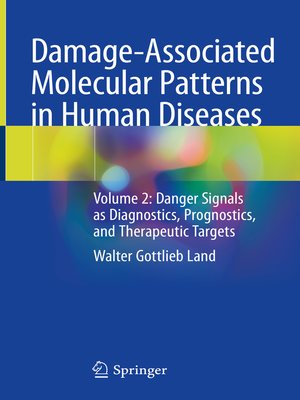Damage-Associated Molecular Patterns in Human Diseases
ebook ∣ Volume 2: Danger Signals as Diagnostics, Prognostics, and Therapeutic Targets
By Walter Gottlieb Land

Sign up to save your library
With an OverDrive account, you can save your favorite libraries for at-a-glance information about availability. Find out more about OverDrive accounts.
Find this title in Libby, the library reading app by OverDrive.



Search for a digital library with this title
Title found at these libraries:
| Library Name | Distance |
|---|---|
| Loading... |
This book is a continuance of the topic: "DAMPs in Human Diseases", the basics of which were described in a first volume by the same author. This second volume presents our current understanding of the impact of sterile stress/injury-induced innate immune responses on the etiopathogenesis of human diseases by focusing on those diseases that are pathogenetically dominated by DAMPs, i.e., on polytrauma, various solid organ injuries (brain, lung, kidney, liver), atherosclerosis, and cerebro-cardiovascular diseases.
Our growing understanding of the pathogenetic function of activating DAMPs and suppressive DAMPs ("SAMPs") is used as a point of departure to explore how these molecules can be used as biomarkers to extend and improve current diagnostic and prognostic modalities.
Moreover, this new knowledge about the pathogenetic function of DAMPs and SAMPs is taken as a sound and plausible reason for discussing their implications for present and future treatment of the diseases addressed here. In this context, the focus is on the potential of DAMPs as future therapeutic targets and SAMPs as future therapeutics, applied in strict compliance with safety precautions, as also recommended in this work.
The book is intended for professionals from all medical and paramedical disciplines who are interested in applying innovative data from inflammation and immunity research to clinical practice. The readership will include practitioners and clinicians working in the broad field of acute and chronic inflammatory/fibrotic diseases, in particular, traumatologists and intensivists; neurologists and neurosurgeons; cardiologists and cardiac surgeons; pulmonologists and thoracic surgeons; vascular surgeons; nephrologists; gastroenterologists and hepatologists; and pharmacists.
Also available: Damage-Associated Molecular Patterns in Human Diseases - Vol. 1: Injury-Induced Innate Immune Responses







